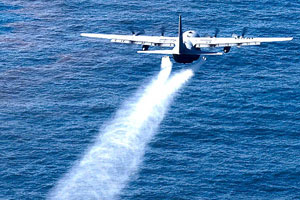The EPA on Wednesday released the first round of information on the testing the agency has been conducting on chemical dispersants. The agency concluded that, in general, the eight dispersant products it tested have “roughly the same impact on aquatic life” and are less toxic than the oil itself. But as other scientists have pointed out, the first results were on the dispersant products alone, not on their toxicity when mixed with oil.
The EPA tests concluded that Corexit 9500, the dispersant BP has been using most in the Gulf, WAS “practically non-toxic” to fish and “slightly toxic” to shrimp. Yet Richard Denison, a senior scientist at the Environmental Defense Fund, notes that the chemicals were tested alone, rather than in combination with oil. The EPA already had most of this data on short-term toxicity, as companies are required to test that before submitting products for approval. Other studies, however, have found that the oil-dispersant combination is more toxic and thus presents more of a threat to Gulf ecosystems than the dispersant alone.
These tests also only studied how much of a dispersant is needed to kill half of the organisms exposed to it for a relatively short amount of time. Gulf organisms, however, will be exposed for much longer periods. Denison concludes that this first round of testing is “of very limited utility in answering any of the more profound questions surrounding the use of dispersants.”
Of course, the EPA cautioned this is just the first round, and there will be more in the coming weeks. But in the meantime, we don’t know a whole lot more about the impact of the chemicals BP has been dumping into the Gulf in record volumes.













